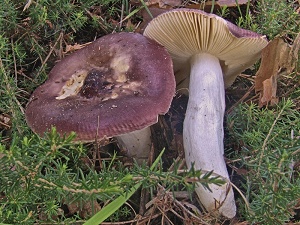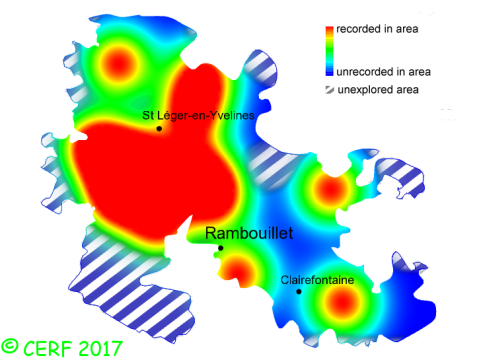| Russula amara Ku?era |
|
|
|
|
|
|
The cap is brown to violet, with a central umbo; its margin is striate. The cap surface is smooth, a bit viscid in wet weather. The stem is white, without ring. The flesh is unchanging; its taste is mild; its texture is grainy (breaking like a chalk stick). The gills are yellowish, free, crowded . The spore print is pale or dark ochre. This species is mycorrhizal. It grows on the ground, in coniferous woods, on a rather acid, sandy soil, with pine. The fruiting period takes place from July to November.
Chemical tests : ochre to pink reaction when in contact with iron sulphate; faint and slow green reaction to Ga´ac; red reaction to sulpho-vanillin; occasional reaction to fuschine (hyphal incrustation stained). Distinctive features : brown to violet cap with acute umbo; acrid cap surface; gills almost free Russula amara is occasional and widely present in the forest of Rambouillet, and is occasional, more generally speaking . | ||
|
page updated on 14/01/18

